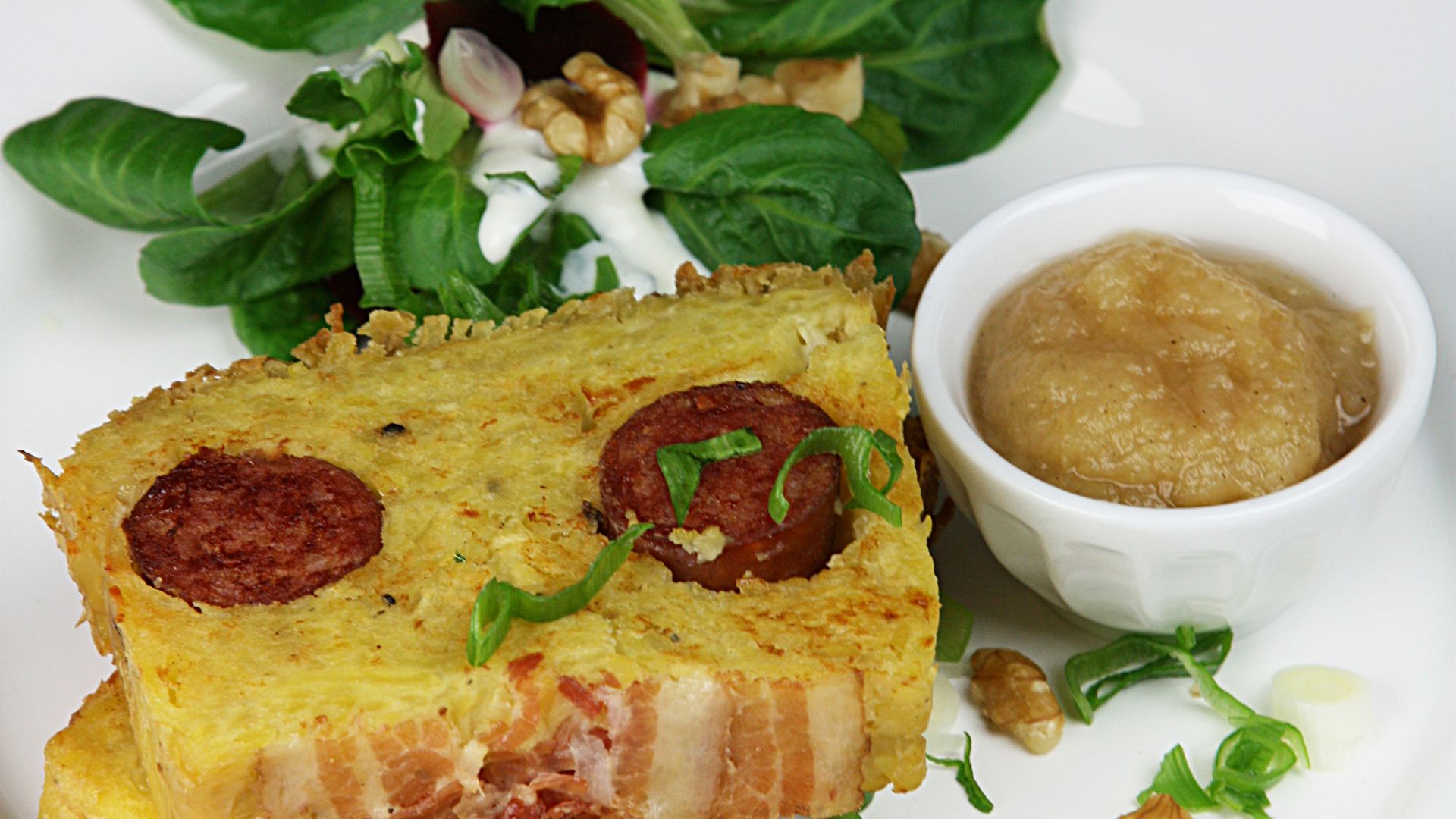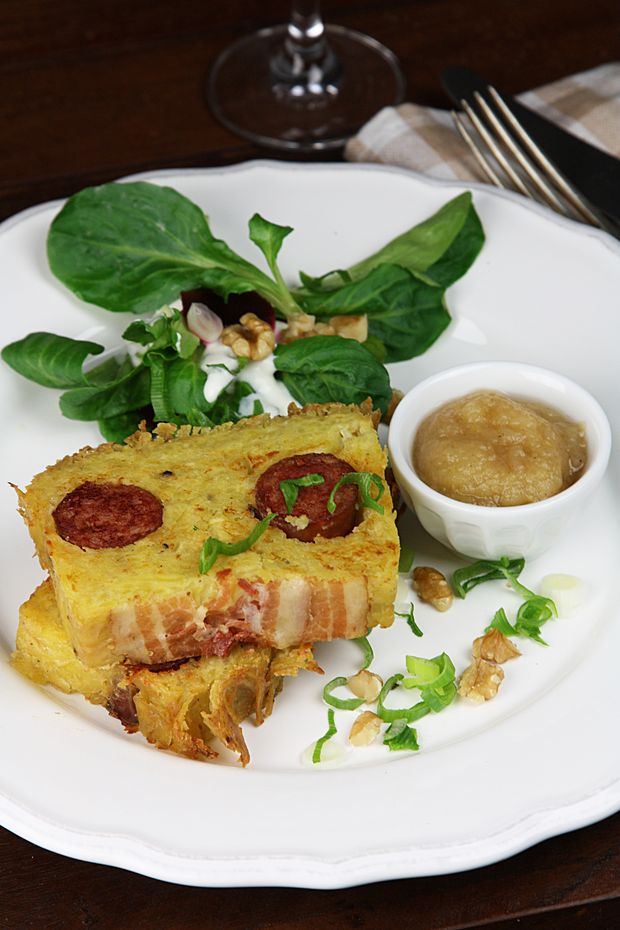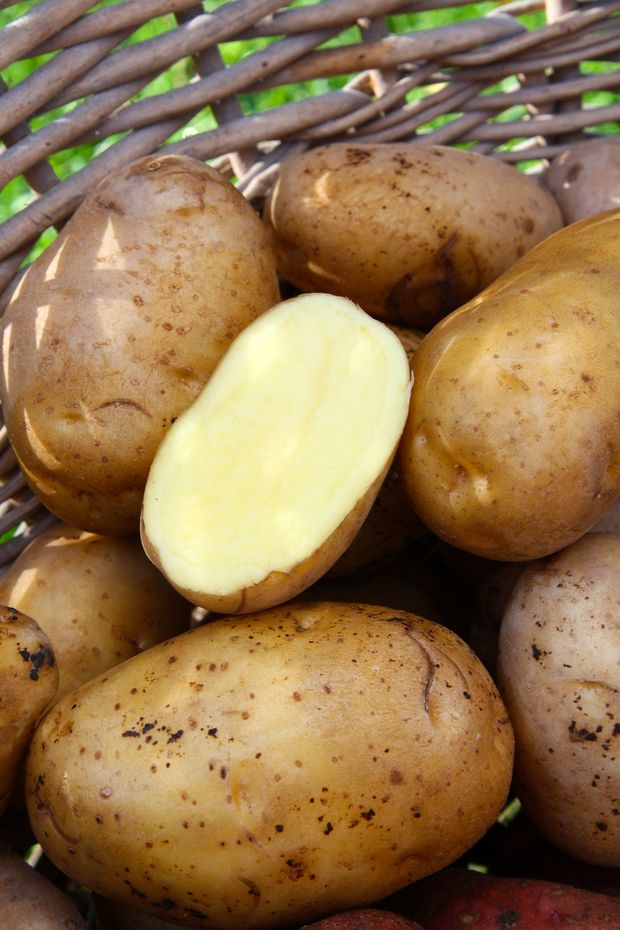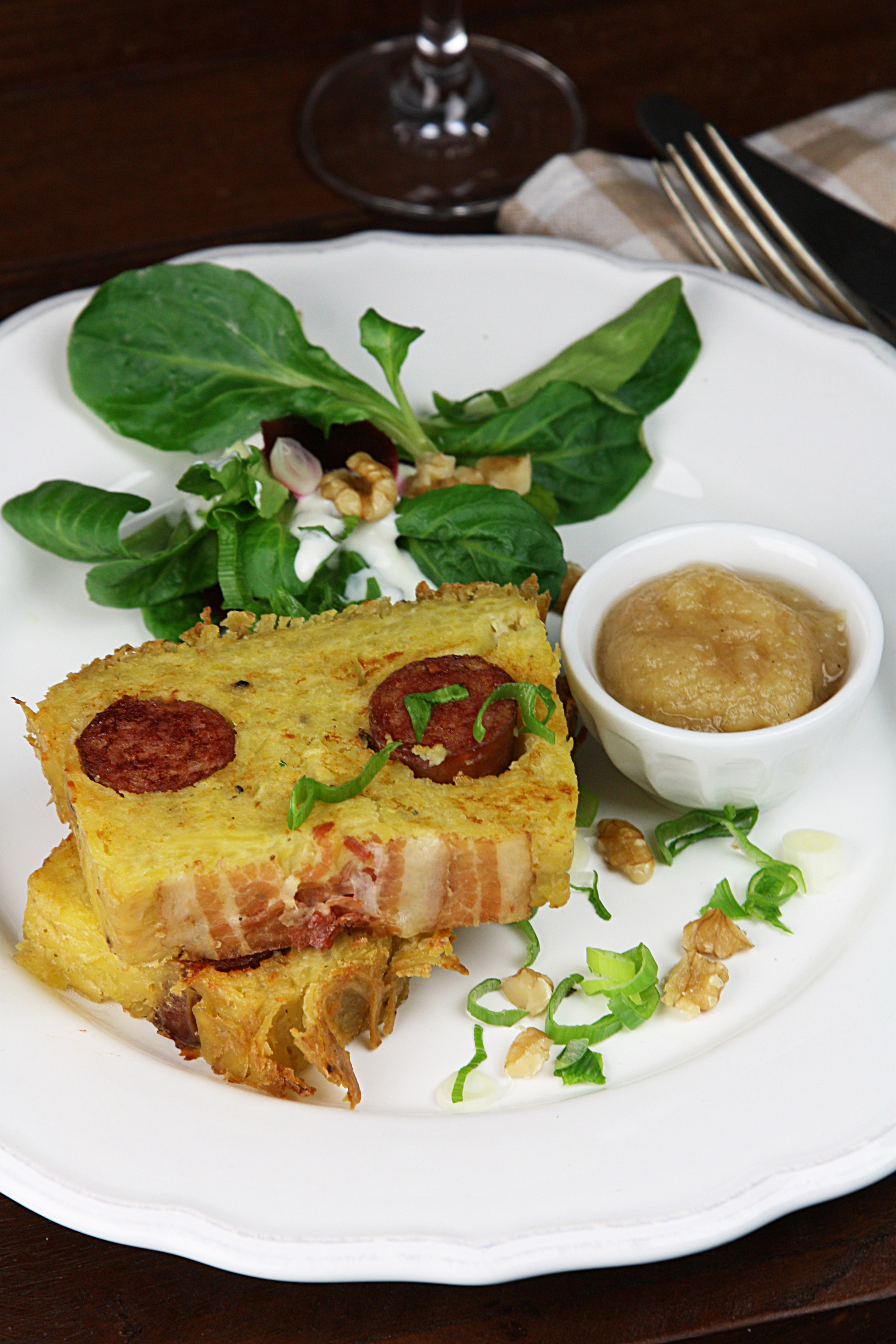traditional potato cake
Bergische Potthucke is a hearty potato cake with mettwurst. Its name means: that which squats in the pot. The speciality is also known by the names Pfannenwatz, Knulls or Riefpucks throughout the Bergisches Land. The potato cake originally came from a poor people's kitchen.
Tasty poor people's cuisine
In addition to cabbage, beans and peas, every household used to have home-grown potatoes as a staple food. Many families ate fried potatoes ("Pfannenscheiben") or small baked cakes made from mashed potatoes ("Erpelskooche") for breakfast to save on bread. "Erpelsfritz" (a mixture of salted and mashed potatoes with a little milk) was also a cheap spread. At lunchtime and in the evening, "Quellmänner met Stippzaus" (jacket potatoes with Stipp sauce) were also very popular. In the course of time, Bergisch cuisine developed many different ways of preparing potatoes, and many a family did not have goose on St. Martin's Day, but a Bergisch potato cake, the potthucke. The former "poor man's goose" is now a popular dish that can also be found on restaurant menus, for example at the member establishments of the Bergische Gastlichkeit association.
How to make potthucke?
For the pot hock, first grate cooked and raw potatoes. The dough is bound with a little cream and egg and seasoned heartily. Fill the potato mixture with sausages into a loaf tin and bake in the oven until crispy. The cake is served in slices with apple sauce or a salad. The next day you fry the leftovers in a pan. Simple potato dishes such as "Leineweber" (pancakes with boiled potatoes), reminiscent of the simple dishes of textile workers, "Riefkooche", "Pille- oder Schnibbelskooche" (various potato cakes made from raw potatoes), potato biscuits and "Reibewaffeln" (potato cakes) also originated in the poor people's kitchen. For "Pillekoochen", in contrast to "Reibekuchen", the potatoes are grated on a special grater with a larger blade so that fine strips ("Piller") are obtained.



 Potthucke once was a poor man's dish. The "little man's St. Martin's goose" also tastes delicious without sausages, even for vegetarians.
Potthucke once was a poor man's dish. The "little man's St. Martin's goose" also tastes delicious without sausages, even for vegetarians.